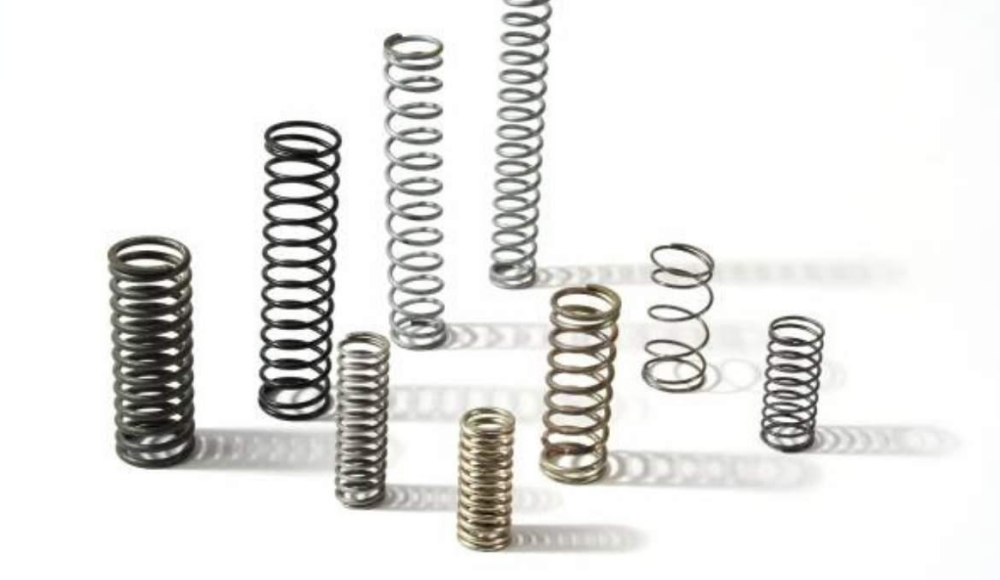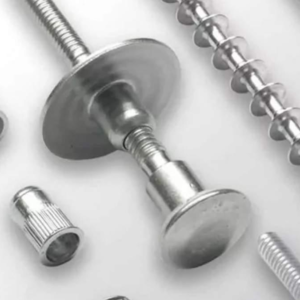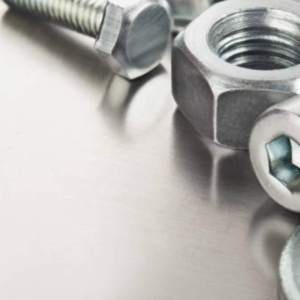الينابيع هي أجزاء ميكانيكية متطابقة لمختلف المكونات. إنهم يعملون بكثافة في الساعات, سيارات, والهواتف الذكية. هناك أنواع عديدة من الينابيع, وكلها تختلف في خصائصها, مما يجعل من الصعب اختيار الخيار الصحيح. في هذه المقالة, سنناقش أنواع الربيع الشائعة, استخداماتهم, المواد التي صنعوها, وفشل الربيع الميكانيكي.
مبدأ الربيع موضح بقانون هوك
الينابيع هي أجزاء ميكانيكية, قادرة بشكل جيد على تخزين الطاقة. يقومون بتخزين الطاقة عند التحميل وإطلاقها عند إزالة الحمل. وهذا هو الفعل الأساسي لجميع أصناف الربيع ويتميز بقانون هوك.
وفقا لقانون هوك.
تختلف القوة اللازمة لضغط الزنبرك أو تمديده بعلاقة مباشرة بالإزاحة. رياضيا, يتم تمثيله على أنه:
F=−kX
في هذه المعادلة:
- F = القوة المطبقة
- X = إزاحة الربيع/استعادة القوة, سلبية للنزوح.
- ك = ثابت الربيع; ذلك يعتمد على طبيعة الربيع, ويبلغ عن متغير يقيس ربيع الربيع.
أنواع النوابض الميكانيكية
يتم تطبيق الينابيع في العديد من الصناعات والمجالات. إنها مصنوعة من العديد من المواد والعديد منها لها أشكال, مختلفة عن الكائنات التي تم إنشاؤها بشكل طبيعي. تنقسم الينابيع بشكل رئيسي إلى ثلاثة أنواع رئيسية;
فئة 01: الينابيع الحلزونية
يتم تصنيع النوابض الحلزونية عن طريق لف السلك بطريقة حلزونية بحيث يمكن تغيير المقاطع العرضية. وتشمل الأنواع الرئيسية من الينابيع الحلزونية:
- نوابض الضغط: يتم استخدام النوابض اللولبية المفتوحة في الضغط بدون أحمال محورية. وهذا يعني أن قطر تصميم الملف لا يتغير مع الحمل. تُستخدم هذه الزنبركات في أقلام الحبر الجاف حيث يتم إجراء "النقر" وفي إعدادات السيارة حيث يتم امتصاص الصدمات.
- تمديد الينابيع: نوابض التمديد عبارة عن ملفات مغلقة تخزن التوتر عند تمديدها وتعود إلى شكلها الأصلي عند تحريرها. يتم استخدامها بشكل شائع في ترتيبات السحب بما في ذلك أبواب الجراج وصنادل الوزن حيث تعمل عن طريق التمدد لقياس الوزن.
- الينابيع الالتواء: تربط نوابض الالتواء مكونين بزوايا محددة. أنها تعمل عادة عن طريق التواء. يتم استخدامها عند لفها وعندما يتم إطلاقها فإنها تستعيد حالتها الطبيعية حيث تطلق الطاقة. يعد التصنيع باستخدام الحاسب الآلي طريقة مثالية لتشكيل نوابض الالتواء المخصصة للاستخدام بكميات كبيرة.
- دوامة الينابيع: النوابض الحلزونية مبنية من شرائح معدنية مستطيلة. إنهم قادرون على تخزين الطاقة ثم إطلاقها بشكل موحد. تُستخدم هذه النوابض بشكل حيوي في الساعات الميكانيكية, ألعاب الأطفال, والحركات مثل كراسي المقعد التي تقدم نوعًا معينًا من الحركة.
فئة 02: ليف سبرينغز
يتميز زنبرك الأوراق بمقطع عرضي مستطيل. وتتكون هذه الينابيع من صفائح معدنية تعرف بالأوراق, متراكبة على بعضها البعض. تستخدم هذه النوابض عادة في السيارات الكبيرة. بعض الأنواع الشائعة مذكورة أدناه:
- بيضاوي الشكل أوراق الربيع: وهي تتكون من نوابض شبه إهليلجية في معارضة تدريجية لبعضها البعض لتكوين شكل بيضاوي. أصلا, تم استخدامها في السيارات لتحل محل الأغلال ولكن تم استبدالها في معظم السيارات الحديثة.
- زنبرك أوراق شبه إهليلجي: وتستخدم هذه عادة في السيارات. يتم تثبيت أوراق فولاذية بأحجام مختلفة على أحد طرفي إطار السيارة, مع أن أكبرها يسمى الورقة الرئيسية. تتميز هذه النوابض بالكفاءة العالية في توفير هبوط سلس أثناء العمليات على الطرق الوعرة. فضلاً عن ذلك, إنهم مشهورون ببساطتهم في الصيانة والمتانة العالية.
- ربع القطع الناقص بيضاوي الشكل ورقة الربيع: الأنواع الربعية الإهليلجية أو النوابض الكابولية لها طرف مثبت بإطار السيارة والطرف الآخر بالمحور الأمامي. هذا التصميم يجعل الأوراق تتثاءب تحت أحمال الصدمات وتعمل المنشورات مثل الرافعات لتبديد الصدمة.
- ثلاثة أرباع أوراق الربيع البيضاوي: يجمع هذا النوع الربيعي بين الميزات الربعية الإهليلجية وشبه الإهليلجية. يتم تثبيت الجزء شبه الإهليلجي على هيكل السيارة ويتم تثبيت ربع القسم الإهليلجي على المحور الأمامي لتحقيق ثبات أفضل.
- عرضية أوراق الربيع: يتم وضع الينابيع الجانبية على الجانبين. بينما تمتد النوابض الطولية على طول المركبة. أطول ورقة تقع في الأسفل, ويتم إضافة قيدين إلى التصميم. بقدر ما قد يكون هذا الإعداد فعالا, فإنه يؤدي إلى المتداول غير المرغوب فيه في بعض تطبيقات السيارات.
فئة 03: سبرينغز القرص
تُعرف نوابض القرص أيضًا باسم نوابض الغسالة. ويمكن استخدامها بشكل فردي أو في سلسلة أو تكوينات متوازية. من الممكن رفع الأوزان الكبيرة بهذه الأنظمة في مناطق محدودة. فيما يلي الأنواع الأساسية لنوابض القرص:
- بيلفيل القرص الربيع: نوابض قرصية مخروطية, تُعرف أيضًا باسم ينابيع بيلفيل, تقدم حركة زنبركية عند تطبيق الحمل. تصميمها يجعلها مثالية لتحمل الأحمال الكبيرة. فهي صغيرة الحجم نسبيا.
- ربيع القرص المنحني: تسمى أحيانا غسالات الهلال. تتميز النوابض القرصية المنحنية بضغط منخفض لن يتسبب في فك أداة التثبيت بسبب الاهتزازات. أنها تفريق الأحمال بشكل فعال في البراغي, مسامير, والمكسرات, وخاصة في المعدات الاهتزازية.
- مشقوق القرص الربيع: أنه ينطوي على فتحات حول الداخلية, والحواف الخارجية. من الممكن تحقيق قدرة حمل منخفضة مع انحراف عالٍ في التروس, ناقل حركة أوتوماتيكي, والقوابض من خلال استغلال هذه الينابيع.
وظائف الينابيع
الينابيع لها تطبيق كبير في المنتجات الصناعية المختلفة. فيما يلي الوظائف التالية للينابيع وكذلك الاستخدامات:
خصائص امتصاص الصدمات
النوابض قادرة على الاستقبال والتوسع أو الانكماش من خلال تطبيق القوة. هذه القدرة تمكنهم من إدارة المخاطر بشكل جيد. على سبيل المثال, في السيارات, تعمل النوابض على تقليل قوة الاصطدام في كل مرة تصطدم فيها السيارة بمطب ثم تطلق الطاقة المخزنة ببطء.
تخزين الطاقة وإخراجها
تؤدي النوابض أيضًا دورًا حاسمًا في تخزين الطاقة الميكانيكية. يمكنهم تخزين وتفريغ الطاقة بشكل مطرد، وبالتالي فهي ذات قيمة في استبدال البطاريات في بعض الأجهزة. يتم توضيح التطبيق المقصود بشكل جيد من خلال الساعات الميكانيكية ومسامير البندقية.
التحكم في الحركة
يمكن للينابيع التحكم في نقل الأجزاء المميزة. توجد هذه التطبيقات في العديد من الصناعات مثل الجراجات, أبواب, آلات وزنها, صمامات محرك الاحتراق الداخلي, وأنظمة التحكم في القابض.
تخميد الاهتزاز
الينابيع هي أدوات لا تقدر بثمن لتقليل الاهتزازات. لذلك, فهي تساعد على تحسين استقرار المنتجات في مناطق الرنين. إنها وظيفية عند الاستخدام كما هو الحال في أنظمة تعليق السيارات وعربات القطارات حيث يجب معالجة التموجات بشكل جيد.
أنواع المواد المستخدمة في صناعة الزنبرك
| مادة | ميزات فريدة من نوعها |
| سبائك الصلب منخفضة | مقاومة درجات الحرارة العالية; قوية ودائمة. |
| الأسلاك المسحوبة على البارد | زيادة قوة الشد; تحمل أفضل للحرارة. |
| سلك مقسى بالزيت | مقاومة التعب; يقاوم الحرارة والتشوه. |
| قطاع الباينيت المتصلب | قوي جدا; مقاومة ممتازة للتعب. |
| الفولاذ المقاوم للصدأ | مقاومة للتآكل; قوة العائد العالية. |
| سبائك النحاس والتيتانيوم | متين; مقاومة جيدة للتآكل. |
تقنيات الإنتاج العامة للينابيع
يمكن إنتاج الينابيع باستخدام طرق مختلفة, بما في ذلك لف, المعالجة الحرارية, طحن, طلاء, والتشطيب. بجانب, وقد تختلف حسب أنواع الينابيع, ولكن المفهوم العام لا يزال واضحا.
1. لف
في هذه الخطوة الأولية, يقوم المشغلون بتغذية سلك الزنبرك في ماكينة CNC. التالي, يتم لف السلك في الشكل المطلوب, حسب المواصفات المطلوبة للسلك. يتم استخدام عدة طرق خلال هذه المرحلة:
- اللف: يستخدم اللف آلات اللف الزنبركية أو الآلات التي يتم التحكم فيها رقميًا بالكمبيوتر للحصول على ملفات محددة. يتم استخدام هذه العملية بشكل شائع في الضغط, امتداد, والينابيع الالتواء.
- تشكيل: أثناء عملية التشكيل, تُستخدم أدوات صنع الزنبرك CNC لإنشاء تصميمات متنوعة ذات انحناءات وأقطار متعددة. عادة, ينطبق هذا على تصميمات زنبرك التمديد والالتواء.
- الانحناء: يستخدم الانحناء ثني الأسلاك التي يتم التحكم فيها بواسطة الكمبيوتر لوضع السلك في أشكال مختلفة. غالبًا ما يتم تطبيق هذه العملية في تصنيع أشكال الأسلاك.
2. المعالجة بالحرارة
ال المعالجة الحرارية تمكن الينابيع من اتخاذ شكل مختلف تحت الضغط عما هو مقصود أن يكون. كل واحد منهم يعتمد على الكمية المادية, النوع المراد تعقيمه, درجة حرارة, والمدة المطلوبة لتلك المادة.
3. طحن
من الضروري طحن أطراف الزنبركات بشكل مسطح. وهذا يسمح للزنبرك بالوقوف في وضع مستقيم عند وضعه عموديًا أو في أوضاع أخرى. كما أنه يساعد على تسهيل وظيفتها.
4. الطلاء والتشطيب
يعد الطلاء والتشطيب أمرًا أساسيًا لتعزيز القيمة الجمالية للينابيع. على سبيل المثال, يوفر الطلاء الكهربائي بالنحاس موصلية ممتازة. في أثناء, يعمل طلاء المسحوق على تحسين المظهر البصري للمنتج. قد تشمل المعالجات السطحية الأخرى عملية الصقل بالرصاص والتي يتم تطبيقها على الزنبرك البارد, تصفيح, طلاء مسحوق, والأنودة.
أسباب فشل الربيع وتدابير علاجها
يمكن أن تحدث هذه الأعطال في فصل الربيع وتؤدي إلى تلف المعدات, تكاليف صيانة عالية, وتقليل موثوقية المنتج. من المهم ملاحظة مراجعة هذه الإخفاقات لأغراض الوقاية: فيما يلي الأسباب الشائعة والحلول المقابلة لها:
1. اختيار المواد غير صحيح
يؤثر اختيار المواد بقوة على خصائص الينابيع. عند اختيار المواد، من الممكن التنازل عن الخصائص للحصول على فوائد معتبرة. قد يؤدي عدم القيام بذلك إلى حدوث مشكلات. لذلك, يُنصح بالبحث عن مواد مختلفة قبل الاختيار.
2. جودة التشطيب سيئة
تعمل عمليات الطلاء والأكسدة مثل طلاء المسحوق على زيادة أداء النوابض. إن عدم التطبيق السليم والاستبعاد الكامل لهذه العمليات يعرض الينابيع للتآكل في البيئات المعادية. لذلك, التشطيب المناسب ضروري للحفاظ على سلامة الينابيع.
3. درجة حرارة التشغيل غير محددة
يجب أن تكون النوابض مناسبة لدرجات الحرارة التي سيتم استخدامها فيها. من المهم اختيار المواد التي لا تتشوه عند درجات الحرارة المرتفعة. يعد استخدام المعالجة الحرارية المناسبة طريقة تحسين أخرى. بالإضافة إلى ذلك, إن تطبيق التشطيبات ذات الثبات الحراري العالي يمكن أن يعزز الأداء.
4. عمليات التصنيع السيئة
تعتبر فحوصات الجودة أثناء الإنتاج أمرًا بالغ الأهمية. أنها تضمن أداء الينابيع وظهورها كما هو متوقع.
خاتمة
الينابيع لا غنى عنها في المنتجات التي تحتوي على الحركة. يتم ضغط النوابض لتخزين الطاقة ثم يتم إطلاقها أثناء التمدد. لاختيار نوع الربيع المناسب, معرفة الأنواع المختلفة وخصائصها إلزامية. تعتمد وظيفة كل ربيع على نوع المادة المستخدمة, بناء الربيع, وآلية التجميع. استشارة الخبراء سيساعدك التصميم في الربيع على اتخاذ القرارات الصحيحة لمشروعك!



